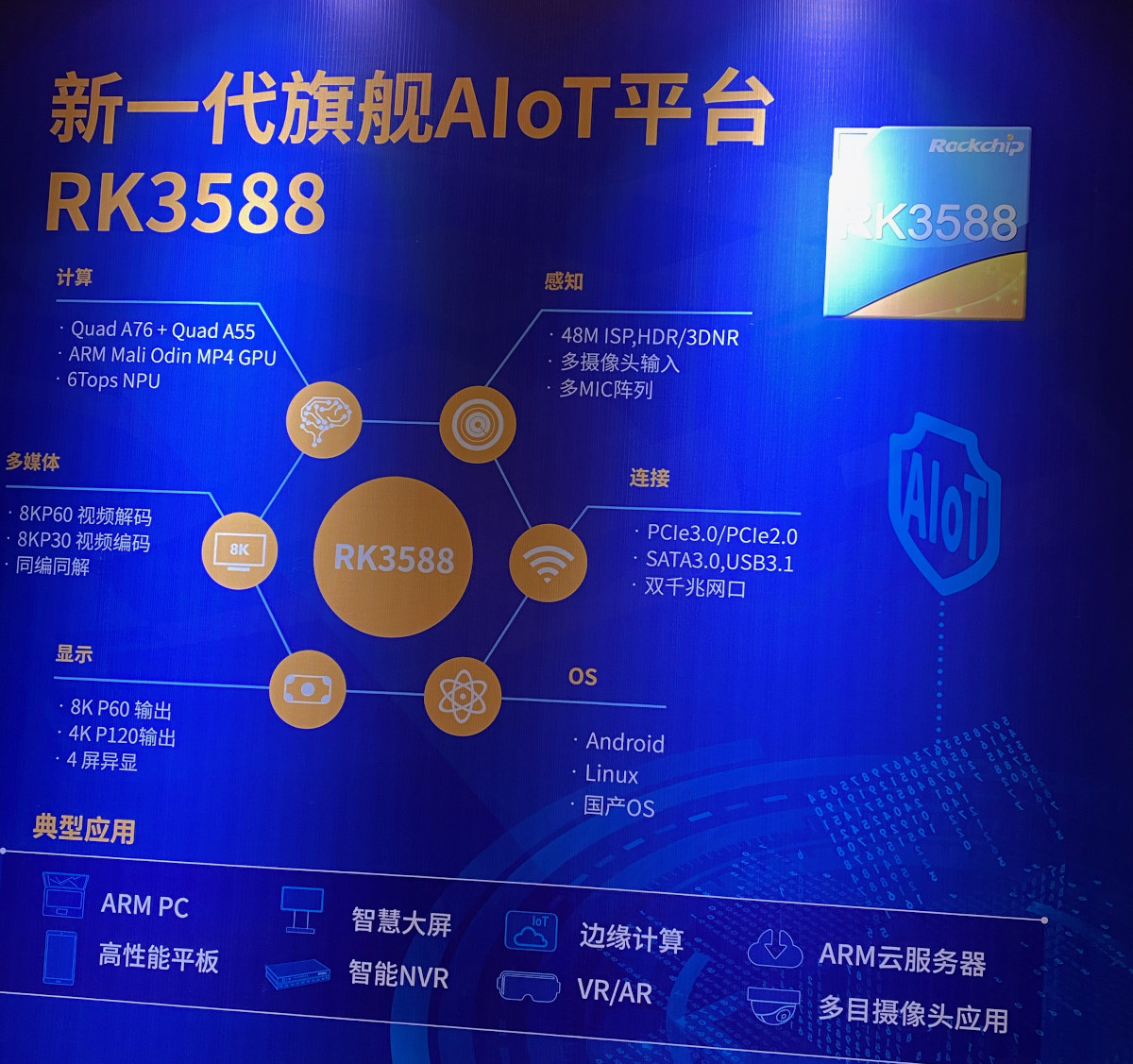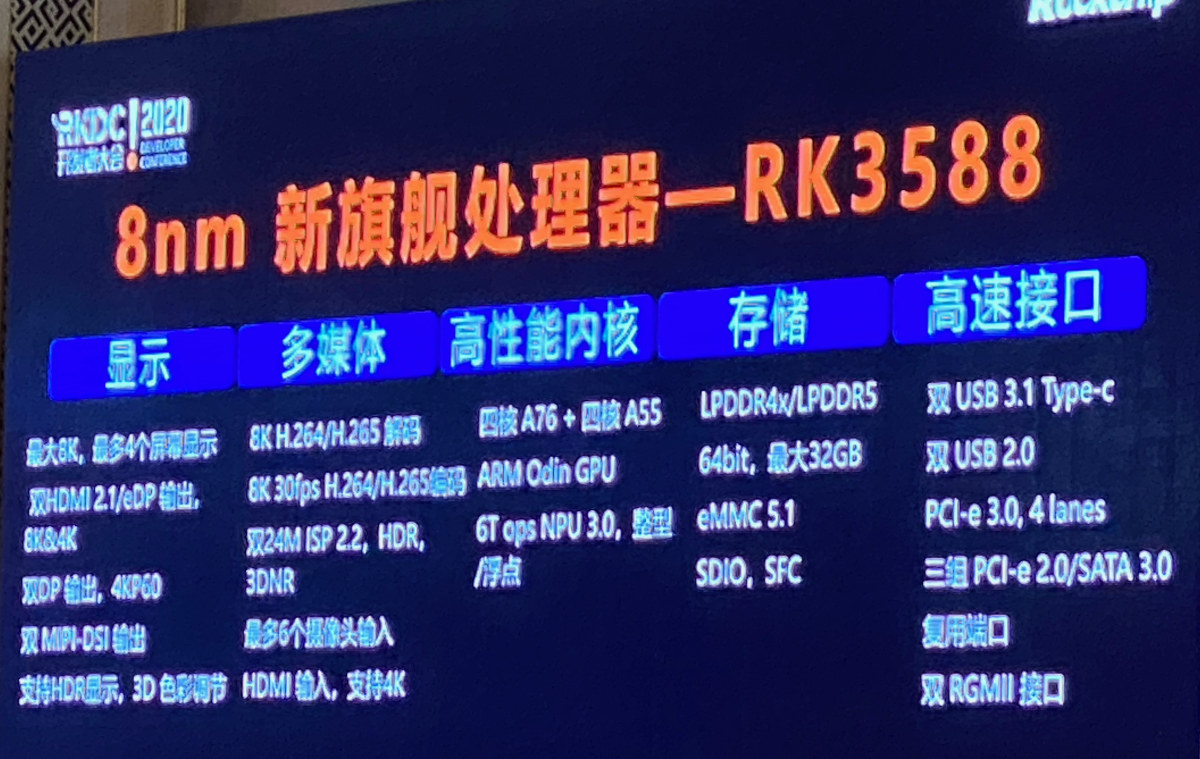Rockchip RK3588 is one of the most anticipated processors for the year on this side of the Internet with the octa-core processor features four Cortex-A76 cores, four Cortex-A55 cores, an NPU, and 8K video decoding support.
[Update December 2021: check out our post with the RK3588 datasheet for the latest details about the processor]
The roadmap shows an expected launch date in Q3/Q4 2020, but sadly the release date will be pushed back in the future. Having said that, the Rockchip Developer Conference (RKDC) is now taking place, and the company has put up a poster that reveals a bit more about the processor.
That means we now have more detailed Rockchip RK3588 specifications:
- CPU – 4x Cortex-A76 and 4x Cortex-A55 cores in dynamIQ configuration
- GPU – Arm Mali “Odin” MP4 GPU
- AI Accelerator – 6 TOPS NPU 3.0 (Neural Processing Unit)
- VPU – 8Kp60 video decoding support, 8Kp30 encoding support
- Memory I/F – LPDDR4x/LPDDR5 up to 32GB
- Storage – eMMC 5.1, SDIO, SATA 3.0 (multiplexed with PCIe 2.0)
- Video Output
- Dual HDMI 2.1 / eDP up to 8Kp60 or 4Kp120
- Dual DisplayPort up to 4Kp60
- Dual MIPI DSI output
- Up to four independent displays
- Camera – 48M (2x 24M) ISP with HDR and 3D NR support; multi-camera input
- Audio – Microphone array support
- Networking – Dual Gigabit Ethernet
- USB – 2x USB 3.1 Type-C, 2x USB 2.0
- PCIe – 4-lane PCIe 3.0, and 3x PCIe 2.0 (multiplexed with SATA)
- Manufacturing process – 8nm LP
The company will provide support for Android, Linux, and a “domestic OS”. We should note that the GPU has changed from “Natt” family to “Odin” family. Rockchip is unable to disclose the GPU name (if it already exists) as it’s a new GPU family that has yet to be announced. We were informed that Rockchip designed its own NPU IP for RK3588, and did not use a third-party design like VeriSilicon NPU IP.
RK3588 specifications are pretty impressive, and the processor will be found in Arm computers, smart displays, edge computing & AIoT solutions, Arm servers, high-performance tablets, network video recorders, virtual reality headsets, and applications requiring multiple cameras and displays. We should however note that RK3588 sadly lacks UFS support, and relies on the slower eMMC 5.1 flash interface for storage. The launch is now scheduled for Q2/Q3 2021.

Jean-Luc started CNX Software in 2010 as a part-time endeavor, before quitting his job as a software engineering manager, and starting to write daily news, and reviews full time later in 2011.
Support CNX Software! Donate via cryptocurrencies, become a Patron on Patreon, or purchase goods on Amazon or Aliexpress






